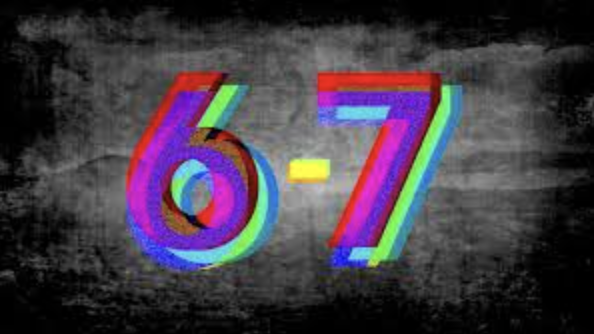Science fiction has a long history (pun intended) of predicting the future. As early as 1657, a space rocket was predicted in the “Comical History of the States and Empires of the Moon”. “Blazing word”, predicted submarine in 1666. The Back to the Future franchise featured seven technologies that only became possible after the movie’s release. Quantum physics did not follow this pattern. There was no definitive science fiction that contained ideas of the superposition state of electrons in quantum physics. This is perhaps because the very nature of quantum physics defies all logic – how can anything possibly exist everywhere at the same time and only have a location when observed? It indeed sounds like something made up, perhaps in a delusional science fiction.
In fact, even after Schrödinger’s revolutionary paper was published in 1926, there were few mentions of it in the science fiction that came in that era, aside from some fleeting, distorted notions of it. Modernism, however, was a stark contrast to this. Webster’s dictionary defines modernism as “a self-conscious break with the past and a search for new forms of expression”, which would certainly fit with the philosophical ideas of quantum physics.
 Virginia Woolf’s novel “The Waves” (the epitome of modernist literature) published in 1931, is believed to be influenced by the emerging quantum physics research. It features overlapping internal dialogues of six different characters as they move through life. The identities of these characters also go through a cycle of becoming unique and defined and then lapsing back into a diffused state. This mirrors Thomson’s ideas of the contrast between electrons’ superposition when considered as a wave and their distinct individuality as a particle. Woolf also often has a character’s identity exist as a mesh of overlapping personalities only for them to combine into a definite self when observed, just like the localisation of electrons in which they only have a definite position when observed.
Virginia Woolf’s novel “The Waves” (the epitome of modernist literature) published in 1931, is believed to be influenced by the emerging quantum physics research. It features overlapping internal dialogues of six different characters as they move through life. The identities of these characters also go through a cycle of becoming unique and defined and then lapsing back into a diffused state. This mirrors Thomson’s ideas of the contrast between electrons’ superposition when considered as a wave and their distinct individuality as a particle. Woolf also often has a character’s identity exist as a mesh of overlapping personalities only for them to combine into a definite self when observed, just like the localisation of electrons in which they only have a definite position when observed.
In yet another example of the impact of quantum physics on Woolf’s modernist writing, in one passage of “The Waves”, a character feels as though the table that is in front of them dissipates and becomes intangible. This is very similar to Eddington’s representation of quantum ideas in which he describes two tables – a normal one and one governed by quantum physics which is insubstantial. The name of Woolf’s novel – “The Waves” – alone brings to mind quantum physics and wave mechanics.
Although quantum physics did not have an immediate impact on science fiction, in 1996 writer Vanna Bonta coined the term “quantum fiction” after publishing her novel: ‘Flight: A Quantum Fiction Novel’. With the emergence of a whole genre dedicated to science fiction that explores the philosophy and science of quantum physics, many science fiction writers became attracted to the phenomena of quantum physics. As more and more science fiction started to be written about quantum physics, these quantum ideas started to trickle down to everyday life.

References to quantum ideas started popping up in TV shows, movies and books outside of the realm of quantum fiction. Phrases like “I understand quantum physics more than I understand you” started becoming more frequent as the field of quantum started to be referred to as something magical or impossible to understand. Now, there are many popular science fiction works that base themselves on quantum physics, such as “Antman: Quantumania, Avengers: Endgame”, “Quantum Leap” or “The Quantum Curators and the Fabergè Egg”.
Amidst all of this, misconceptions about the field of quantum are sure to emerge. As Professor Gerry Canavan of Marquette University says: “Science fiction has generally done a very poor job of explaining the quantum theory, and usually uses it as a synonym for ‘magic’ and treats it as making all manner of bizarre conceits possible.” This, in turn, helps create a pseudoscientific version of quantum theory, in which “quantum mystics” can take advantage of people and spread ideas based in no way on scientific facts.
Under these circumstances, it may seem that the power of science fiction in predicting scientific discoveries is not applicable to the ideas of quantum physics. However, the representation of quantum physics in science fiction, literature and pop culture may still have a positive influence, stimulating thoughts on the philosophy and science behind quantum theory and hopefully encouraging people to look more into it.
Sources:
- https://en.wikipedia.org/wiki/List_of_existing_technologies_predicted_in_science_fiction
- https://vector-bsfa.com/2024/05/21/science-fiction-quantum-physics-and-the-modernists/
- https://en.wikipedia.org/wiki/Quantum_fiction
- https://thequantuminsider.com/2021/07/09/quantum-technology-in-science-fiction-popular-culture/
- https://news.uchicago.edu/story/experts-discuss-quantum-science-screening-ant-man-and-wasp-quantumania
- https://www.cliffsnotes.com/study-notes/21341980














